No products in the cart.
Need help? Call us:
+1 (833) 763-7837
Menu
Categories
- Accessories
- Air Purification Accessories
- Antennas
- Attenuators
- Barcode Scanners
- Batteries and Chargers
- Bottles and Dispensers
- Cables - Misc
- Carrying Straps, Lanyards and Harnesses
- Carts
- Case and Cart Accessories
- Cases
- Cathodic Protection Accessories
- Coaxial
- Crimper Accessories
- Datacom Accessories
- Dry Block Bath Inserts
- EMI Accessories
- Enclosure Accessories
- FIber Optic Accessories
- Fiber Optic Cables
- Gas Detection Accessories
- General Accessories
- GPIB Adapters
- Heating Elements
- Hipot Accessories
- Hoses - Miscellaneous
- HVAC Accessories
- Induction Heater Accessories
- Input Cards
- Jacks /Adapters /Plugs /Clips /Terminators/Coaxial
- Jobsite Storage and Cabinets
- Knockout Accessories
- Lab Accessories
- LCR Test Fixtures
- LED and LCD Displays
- Manuals
- Material Handling Accessories
- Microphones
- Microscope Accessories
- Motors
- Options
- Pinhole/Holiday Detector Accessories
- Plumbing Accessories
- Precision Measuring Instrument Accessories
- Pressure Calibrator Modules
- Printers and Printing Supplies
- Probes
- Rack Mounts and Stands
- Repair Parts and Fuses
- Scale Accessories
- Shunts
- Software
- Soldering Accessories
- Spectrum Analyzer Accessories
- Static Control Accessories
- Switch and Semiconductor Modules/Access
- Test Fixtures
- Test Leads and Instrument Accessory Kits
- Thermal Imager Accessories
- Training and Education
- Underground Utility Location Accessories
- Vibration Accessories
- Video Accessories
- Voltage Transformer
- Warranty and Calibration
- Amplifiers / Preamps / Preamplifiers
- Audio Equipment
- Automotive Test Tools
- Battery Testing
- Blower Door and Duct Testing
- Borescopes / Boroscopes
- Clamp Meters
- Cleanroom
- Color and Appearance
- Conduit Benders
- Current Sensors
- Datacom and Networking Products
- Dataloggers Data Acquisition
- Decade Boxes
- Distance Meter
- Electrical Parts and Products
- Cable and Wire
- Cable Reels
- Electrical Cord
- Electrical Jumpers and Pigtails
- Electrical Parts
- Electrical Plugs and Connectors
- Line Splitters
- Lockout / Tagout
- Outlet Boxes
- Pulling Products
- Pushbutton Pendant Stations
- Receptacle Testers
- Temporary Power Distribution
- Terminal Blocks and Strips
- Terminals and Crimps
- Wall Plates
- Wire Management
- Wire Ties
- Work Lighting and String Lighting
- Enclosures and Boxes
- Environmental Testers / Physical Property
- Anemometer / Air Flow
- Barometers and Altimeters
- Chlorine Tester
- Dissolved Oxygen Meter / Fluoride
- EMF / ELF Meter
- Heat Index Monitors
- Humidity Meters
- Hygrometers
- Moisture Meters
- Nuclear Radiation Monitors
- PH / ORP Meters
- Psychrometer
- Refractometers / BRIX
- Scales / Weight
- Sound Level Meters
- Stopwatches / Timers / Clocks
- Water Quality Accessories
- Water Quality Meters
- Weather Measurement
- Wind Tunnels
- Flow Measurement
- Force / Torque / Hardness Meters
- Gas Detection
- Ground Testers
- Health and Safety
- HVAC Equipment and Instruments
- Automotive RRR Machines
- Brazing
- Combustion Analyzers
- Hose Adapters, Valves and Parts
- HVAC - Testing - Adjusting - Balancing
- HVAC Equipment - Misc
- HVAC Manifolds and Gauges
- HVAC Vacuum Pumps
- Refrigerant Leak Detectors
- Refrigerant Recovery Machines
- Refrigerant Recovery Tanks
- Smoke Pump Test Kits
- Tubing Tools
- Vacuum Gauges
- Hydraulic Cylinders
- Indoor Air Quality
- LCR Meters / Impedance Measurement Products
- Leakage Detectors
- Life Sciences Equipment
- Autoclaves and Sterilization
- Bunsen Burners
- Centrifuges
- Cold Storage
- Colony Counters
- Dry Block Heaters and Cooling Blocks
- Environmental Test Chambers
- Flame Photometers
- Flocculators
- Fluidized Bed Baths
- Gel Imaging Electrophoresis
- Glassware Washers-Dryers
- Heating Mantles / Electromantles
- Homogenizers
- Incubators
- Kjeldahl Apparatus
- Lab Apparatus - Misc
- Laboratory Ovens
- Laboratory Pumps
- Laboratory Water Purification Systems
- Magnetic Bead Based Purification
- Melting Point Apparatus
- Mixers Rotators and Stirrers
- Pipettes
- Reaction Station
- Recirculating Chillers / Coolers
- Refrigerated Heating Circulators
- Rotary Evaporators
- Shakers and Rockers
- Slide Warmers
- Spectrophotometer
- Thermal Cycler / PCR
- Titrators
- Water Baths and Liquid Baths
- Logic Analyzers
- Materials Testing
- Megohmmeter / Insulation Resistance Testers
- Micro-Ohmmeter / Milliohmmeter
- Microscopes
- Multimeters
- Network Analyzer
- Oscilloscopes
- Panel Meters
- Personal Protective Equipment
- Phase / Motor / Transformer Testing
- Power Measurement
- Power Supplies
- Process / Calibration
- Programmers / IC and RAM Testers
- Protocol Analyzers
- Prototyping
- Radiometric
- Reliability / Preventative Maint / Rotational
- RF, Microwave, EMI
- Safety Testing / Surge Testing
- Signal Generators / Counters
- Signal Level Meters - CATV / CCTV / Satellite
- Solar Analyzers
- Soldering Equipment
- BGA Rework Station
- Chemicals
- Cleaning Pins and Drills
- Depaneling Systems
- Desoldering Equipment/Rework Stations
- Desoldering Irons
- Dispensing Equipment
- Flux
- Flux Remover
- Fume Extraction
- Hot Air Guns
- Hot Air Pencils
- Lead Forming Equipment
- Nitrogen Generation
- Nozzles
- PCB Supports and Holders
- Pre-Heater
- Solder
- Solder Wick
- Soldering Equipment
- Soldering Irons
- Soldering Pots
- Soldering Robots
- Soldering Stands
- Soldering Stations
- Soldering Tip Cleaners
- Soldering Tip Thermometers
- Soldering Tweezers
- Sponges and Brass Wool
- Thermal Wire Strippers
- Tips
- Vacuum Pick-Up Tools
- Sporting / Hunting / Law Enforcement Optics
- Static Control
- Surveying / Construction Measurement
- Thermal Imagers
- Thermometers
- Thickness Gauges
- Tools
- Blackeners
- Cable Cutters
- Cable Strippers
- Cable Tie Guns
- Combination Squares
- Conduit Tools
- Crimpers
- Cutters
- Cutting Tools
- Datacom / Fiber Optic Tools
- Drill Bits and Sets
- Drill Rod
- Dry Lubricants
- Electric Screwdrivers
- Feeler Gage
- Fiber Optic Cable Tools and Fiber Scopes
- Flashlights and Headlights
- Ground Flat Stock
- Hex Drivers, Torx Drivers
- Hose Benders
- Hose Clamps
- Hot Melt
- HVAC Service Tools
- Insulated Tools
- Keystock
- Knockout Tools
- Layout Fluid
- Level Measurement
- Maintenance Kits
- Multi-Tools
- Other Hand Tools
- Pliers
- Pneumatic Hand Tool Operators
- Power Tools
- Probes & Scribes
- Punch & Die Sets
- Punchdown Tools
- Remote Hydraulic Pumps
- Screwdrivers
- Shims & Shim Stock
- Sockets & Ratchets
- Spatulas
- Telecom Service Tools
- Telescopic Tools
- Threaded Rod
- Tool Kits
- Tool Wrap
- Tweezers
- Vises
- Wire
- Wire Strippers
- Wrenches & Wrench Sets
- Toys / Cool Stuff
- Transmission Line/Station Testing
- Cable Testing
- Circuit Breaker Testers
- Corona Detection
- Dielectric Oil Testing
- High Current Detectors / Indicators
- High Voltage Detectors / Indicators
- Hot Sticks
- Phasing Sticks
- Primary Injection Test Equipment
- Safety Equipment
- Secondary Injection Test Equipment
- SF6 Gas Leak Detectors
- Transformer Testing/TTR
- Transmission Cable Height Meters
- Video Distribution Equipment
- Video Test Equipment
- Voltage / Continuity and Non-Contact Testers
- Wire Tracers / Circuit Breaker Tracers
- Workbenches
Pico PG914 USB Differential Pulse Generator, 2 x <60 ps + 2 x <40 ps Outputs
Brand:
30 people are viewing this product right now
$15,922.50
Shipping calculated at checkout.
Estimated delivery:5 days
Source PG914 40ps/60ps pulse output generator
- PG914 USB Differential Pulse Generator, 2 x <60 ps + 2 x <40 ps Outputs
- Integral 50 O SMA(f) Step Recovery Diode outputs
- < 60 ps transition time
- Dual 2.5 to 6 V variable amplitude outputs
- ±1 ns in 1 ps steps timing deskew
- 200 ns to 4 µs pulse width
- 1 µs to 1 s internal clock period
- < 3 ps RMS jitter relative to external trigger
- –20 dB 10 GHz SMA(m-f) attenuator included with Step Recovery Diode outputs
- External 50 Ω N(m) positive and negative Tunnel Diode pulse heads
- < 40 ps transition time
- Dual > 200 mV fixed amplitude outputs
- ±200 ps in 1 ps steps timing deskew
- Inter-series N(f) – SMA(m) adapter included with Tunnel Diode pulse heads
- Differential outputs
- 200 ns to 4 µs pulse width
- Adjustable 1 µs to 1 s internal clock period
- Typical 3.0 ps RMS jitter relative to external trigger
Have any Questions?
Feel free to Get in touch
Guarantee Safe and Secure Payment Checkout
Description
Pico PG911 USB Differential Pulse Generator, 2 x <60 ps Pulse Outputs
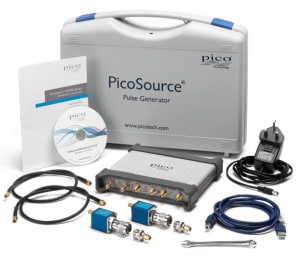
- PG914 USB Differential Pulse Generator, 2 x <60 ps + 2 x <40 ps Outputs
- Integral 50 O SMA(f) Step Recovery Diode outputs
- < 60 ps transition time
- Dual 2.5 to 6 V variable amplitude outputs
The fast-transition pulse can stimulate a transmission path, device or network with a broad spectrum signal in a single instant. Such a pulse is very useful for many of the high-speed broadband measurements that we need to make; for instance in time-domain reflectometry, semiconductor test, gigabit interconnect and port test and in radar.
Differential high-speed data in particular dominates the measurement challenge in our digital, computing, interconnect and telecommunications systems. Surprisingly, cost-effective fast-transition differential pulse generators have been very hard to find … until now!
The new PicoSource® PG900 Series pulse generators are high-speed, low-cost instruments for use in single-ended and differential pulsed measurement applications. The fast-transition pulse can stimulate a transmission path, device or network with a broad-spectrum signal in a single instant. Such a pulse is essential for many of the high-speed broadband measurements that we need to make; for instance in time domain reflectometry, semiconductor test, gigabit interconnect and port test, and in radar system test.
The generators are typically used to drive broad spectral content into a 50 ohm cable, connector, RF semiconductor or other device under test. The reflected or transmitted pulse can then be monitored and displayed by a broadband or sampling oscilloscope. Known as Time Domain Reflection or Transmission analysis, these techniques offer an alternative to vector and scalar network analysis. They are widely used to speed the development, evaluation and testing of high-speed data paths such as Ethernet, USB, HDMI and SATA, and RF, radar and microwave devices, cables, networks and equipment.
Unlike traditional, bulky and expensive benchtop instruments, the PicoSource PG900 generators are compact USB devices that connect to a PC running Microsoft Windows. This gives the advantages of leading microwave performance in a compact and portable instrument, a high-resolution graphical display, and easy setup by means of keyboard, mouse or touchscreen. The low cost and portability of these instruments can bring RF and microwave test out of the lab and into the world of on-site measurement. With all these advantages, the new pulse generators will have a role in the toolkit of every broadband equipment designer, installation engineer and repair technician.
“Unusually and yet vital to the modern differential measurement challenge, the PicoSource PG900 pulse generators have deskewable differential outputs adjustable to 1 ps resolution,” explained Business Development Manager Mark Ashcroft. “This allows timing inequalities in test connections and fixtures to be nulled out; or the deliberate introduction of timing skew to stress-test your system.” Each of the outputs can also operate in single-ended mode.
The PicoSource PG900 Series offers two triggered step-generation technologies to suit different applications. The PG911, with integral step-recovery diode outputs, offers a transition time of < 60 ps with a large and adjustable output swing of 2.5 V to 6 V on each output. These pulses can support high dynamic range and long-distance measurements and can exercise all signal amplitudes in most transmission systems and devices. The PG912 uses external tunnel diode pulse heads to deliver a faster transition time of < 40 ps with fixed 200 mV amplitude right at the interface plane. A third model, the PG914, combines both technologies in one space-saving, economical unit.
All models feature low-jitter external trigger input and output and an internal trigger clock with comprehensive width, period and hold-off adjustments. Pulse edge jitter with respect to the trigger input and output is less than 3 ps RMS.
Generators / Counters/Pulse Generator Template | |
|---|---|
| Min Time Range Single Pulse | 200 ns |
| Max Time Range Single Pulse | 4000 ns (0.000004 s) |
| Number of Channels | 2 |
| External Trigger | Yes |
| Manual Trigger | Yes |
| Burst Mode | No |
| Adjustable Pulse Width | Yes |
| Built in Noise Generator | No |
| Built in Arbitary Generator | No |
Product General Attributes | |
| Unique Features | PG914 USB Differential Pulse Generator, 2 x <60 ps + 2 x <40 ps Outputs Integral 50 O SMA(f) Step Recovery Diode outputs < 60 ps transition time Dual 2.5 to 6 V variable amplitude outputs ±1 ns in 1 ps steps timing deskew 200 ns to 4 µs pulse width 1 µs to 1 s internal clock period < 3 ps RMS jitter relative to external trigger –20 dB 10 GHz SMA(m-f) attenuator included with Step Recovery Diode outputs External 50 Ω N(m) positive and negative Tunnel Diode pulse heads < 40 ps transition time Dual > 200 mV fixed amplitude outputs ±200 ps in 1 ps steps timing deskew Inter-series N(f) – SMA(m) adapter included with Tunnel Diode pulse heads Differential outputs 200 ns to 4 µs pulse width Adjustable 1 µs to 1 s internal clock period Typical 3.0 ps RMS jitter relative to external trigger |
| Warranty | 5 YEARS |
| Additional Info/Comments | Controlled over USB from a single PC, the PG900 Pulse Generators can be used with a PicoScope 9300 Sampling Oscilloscope to measure Time Domain Transmission with those models that do not include that function (PicoScope 9301, 9302, 9321 and 9341). They may also add the versatility of a remotely placed signal generator for long line or installed system testing with any of the PicoScope 9300 models. |
| Interfaces I/O | Analog Output, Analog Input , USB |
| Product Weight | 1.3 LBS |
| Product Height | 1.6 IN |
| Product Length | 7.1 IN |
| Product Width | 7.5 IN |
| Shipping Weight | 4 LBS |
| Data Logging | No |
| HTS/Schedule B Number | 85432000 |
| Calibration Included | Factory Calibration |
| Power Supply Voltage | 120V/220V Universal |
| Country of Origin | Lithuania |
Be the first to review “Pico PG914 USB Differential Pulse Generator, 2 x <60 ps + 2 x <40 ps Outputs”
You must be logged in to post a review.
| Weight | 1.3 lbs |
|---|---|
| Dimensions | 7.1 × 7.5 × 1.6 in |
Related products
Sale
Rigol Complete Lab 3 – Includes DS1052E, DG811, DP832 and DM3058E
Our team of knowledgeable professionals is here to help you make informed decisions. Whether you need product recommendations, technical support, or guidance on your purchase, we're just a click away.
Contact Us Now:
📧 sales@nestesinstruments.com
📞 +1 (833) 763-7837
Let us assist you in finding the perfect solution!
Contact Us Now:
📧 sales@nestesinstruments.com
📞 +1 (833) 763-7837
Let us assist you in finding the perfect solution!



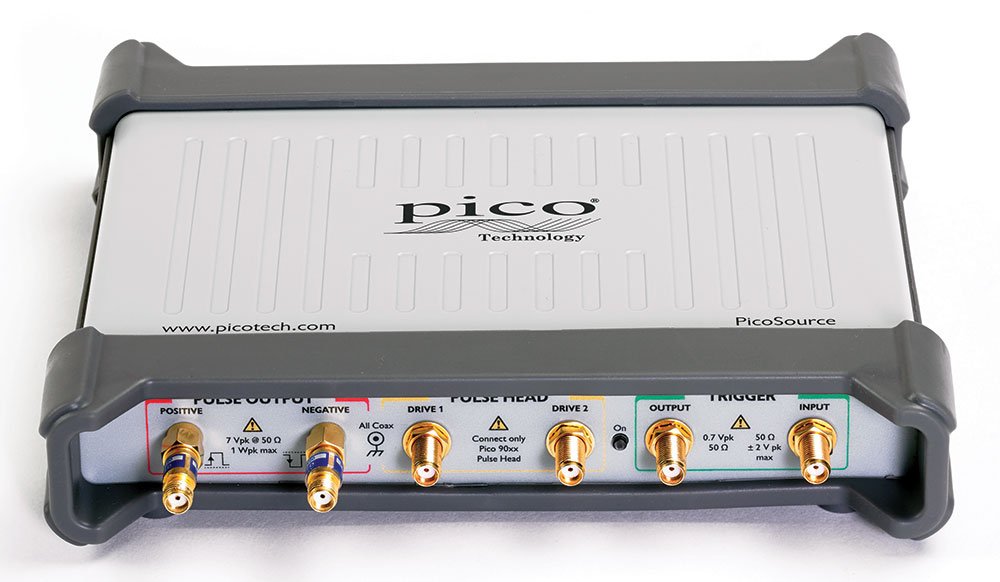

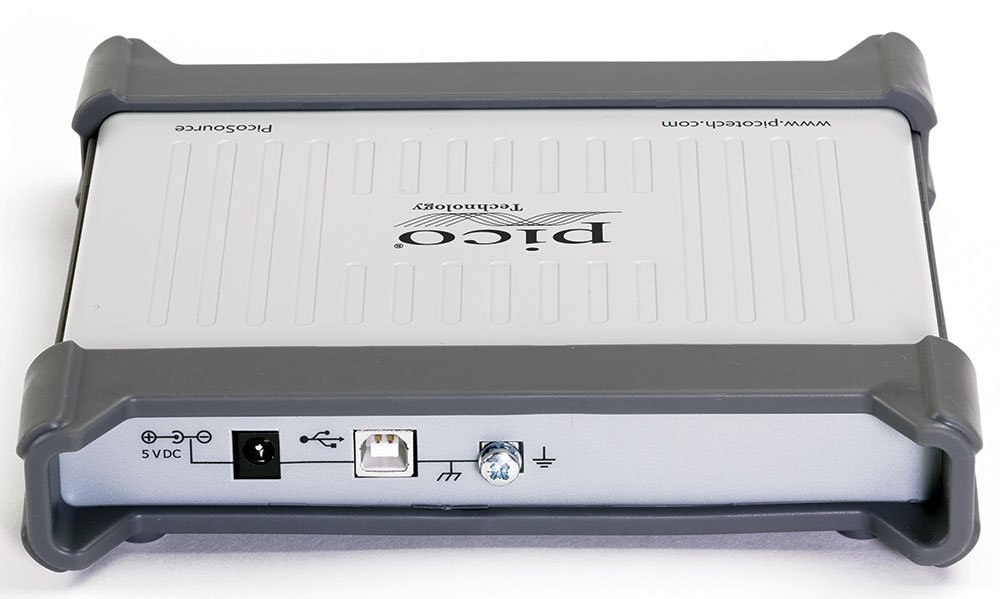
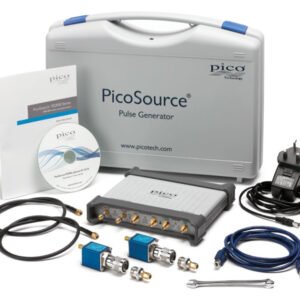

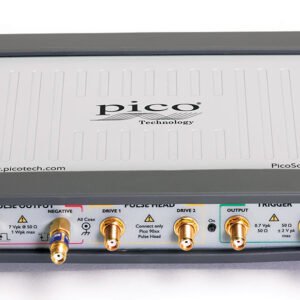
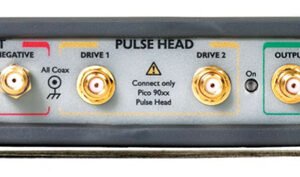
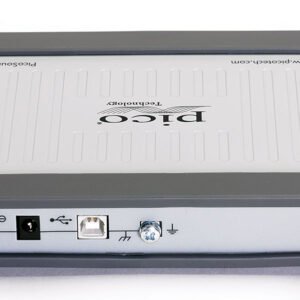

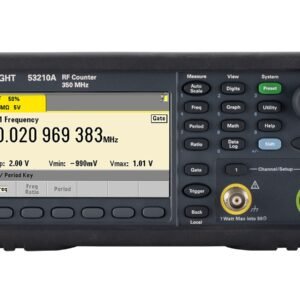

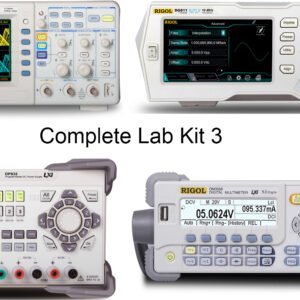
Reviews
There are no reviews yet.